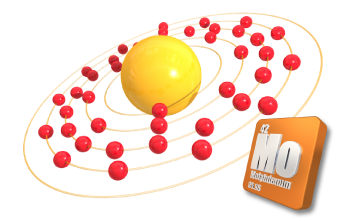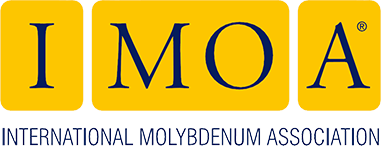For over 27 years AAA Molybdenum Products has supplied industry with a variety of Molybdenum and Rhenium compounds.
Our partnership with Powmet, Inc. located in Rockford, Il. increases our product offerings and knowledge base to other metals such as Vanadium, Chromium, and Tungsten.
Many of the chemicals listed in the catalog are kept in inventory and usually available for same-day shipping. If there are any inquiries about any moly or rhenium chemicals not listed, please contact us.
It’s Elemental… a brief history of our product.

Molybdenum - Element 42
Molybdenum is a grey-silver refractory metal of Group 6 (VIb) of the periodic table. It was first isolated from Molybdenite (molybdenum disulfide) in 1782 by Peter Jacob Hjelm in collaboration with Carl Wilhelm Scheele.
Molybdenum, also known as Moly, has the 5th highest melting point (2,610°C) and the lowest heating expansion of any metal; it therefore finds itself useful in high-strength steel alloys where most of the molybdenum produced ends up. Molybdenum is also used in various forms for its corrosion resistance, used in pigments and dyes, and - specifically molybdenum disulfide - as a solid lubricant.
Molybdenum is an essential trace element in plants, especially in legumes as a catalyst and for bacteria in sequestering nitrogen from the atmosphere. It is a micronutrient for humans.

Rhenium - Element 75
Rhenium was the last, naturally occurring element discovered. It is a rare metal of Group 7 (VIIb) of the periodic table. It was predicted by Dmitry Mendeleyev when he drew the table. It was finally discovered in 1925 by the chemists Ida and Walter Noddack and Otto Carl Berg.
The metal is among the densest and has the second highest melting point of any metal, second only to Tungsten. It has very specific uses in high-strength alloys and in high temperature environments.
Rhenium is very rare and does not exist in any ore-body, but is instead extracted as a by-product of molybdenite mining and to an even lesser extent, from copper ore mining.



